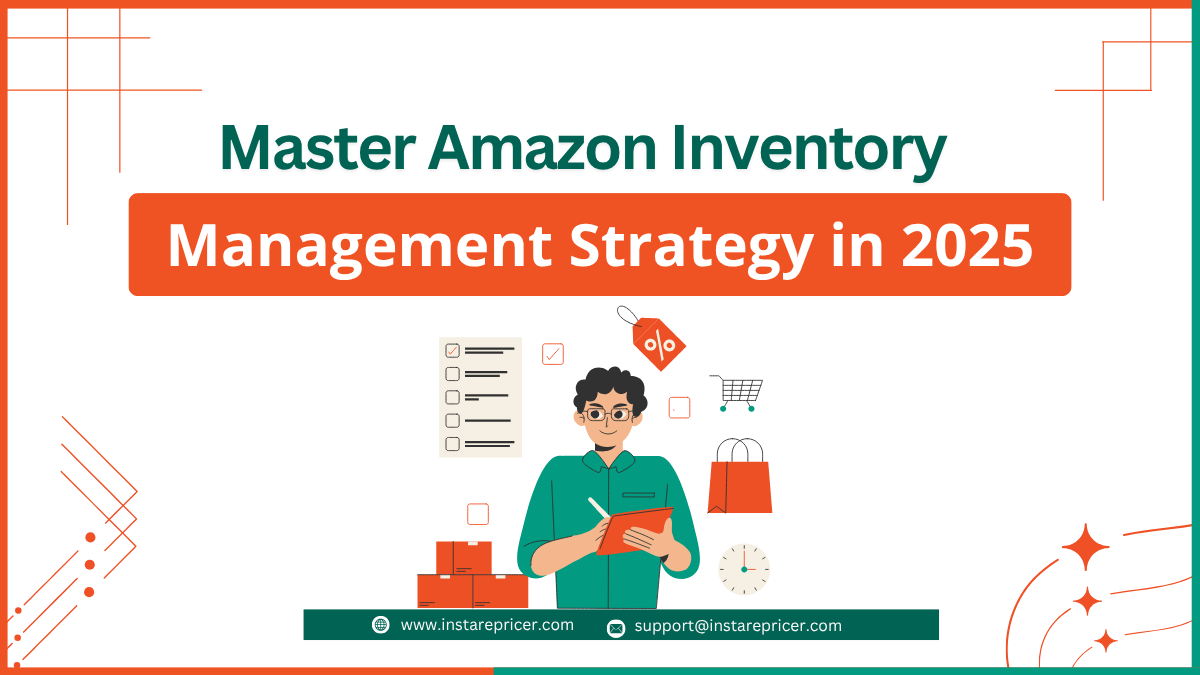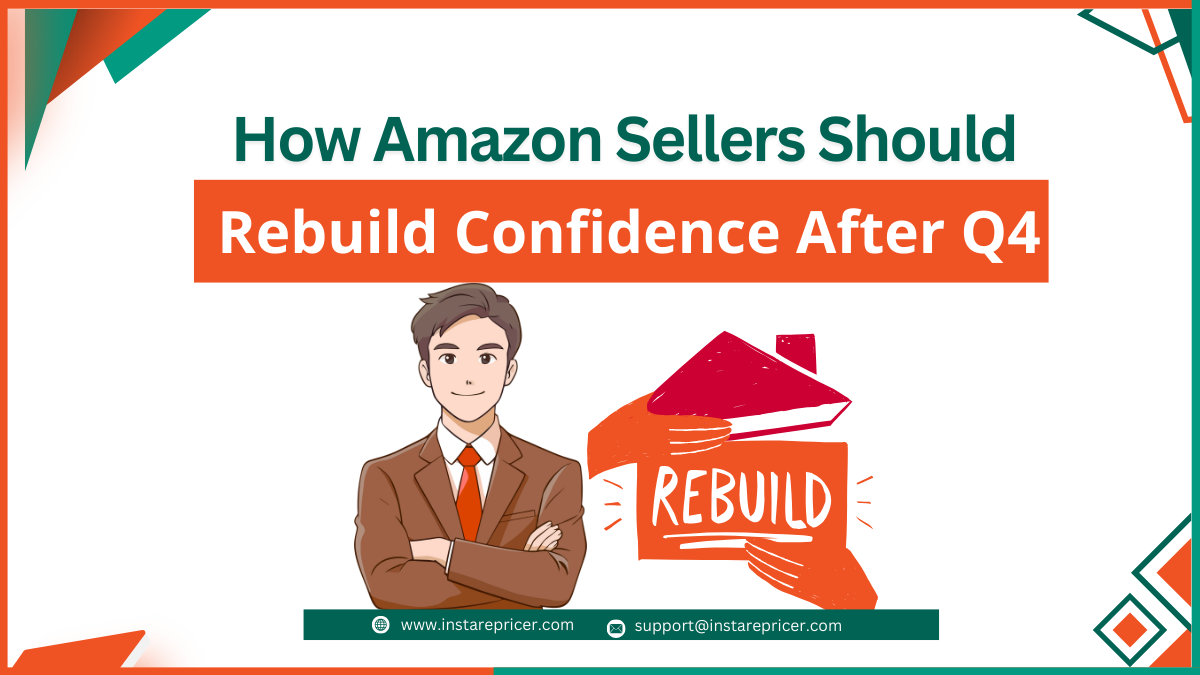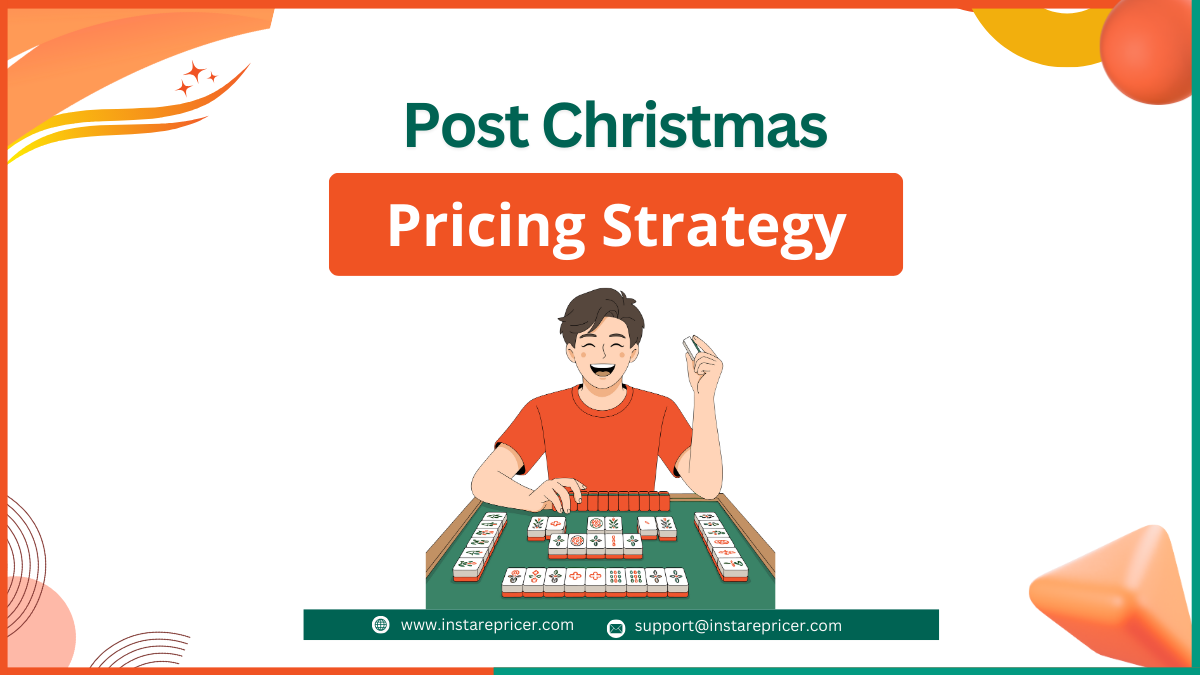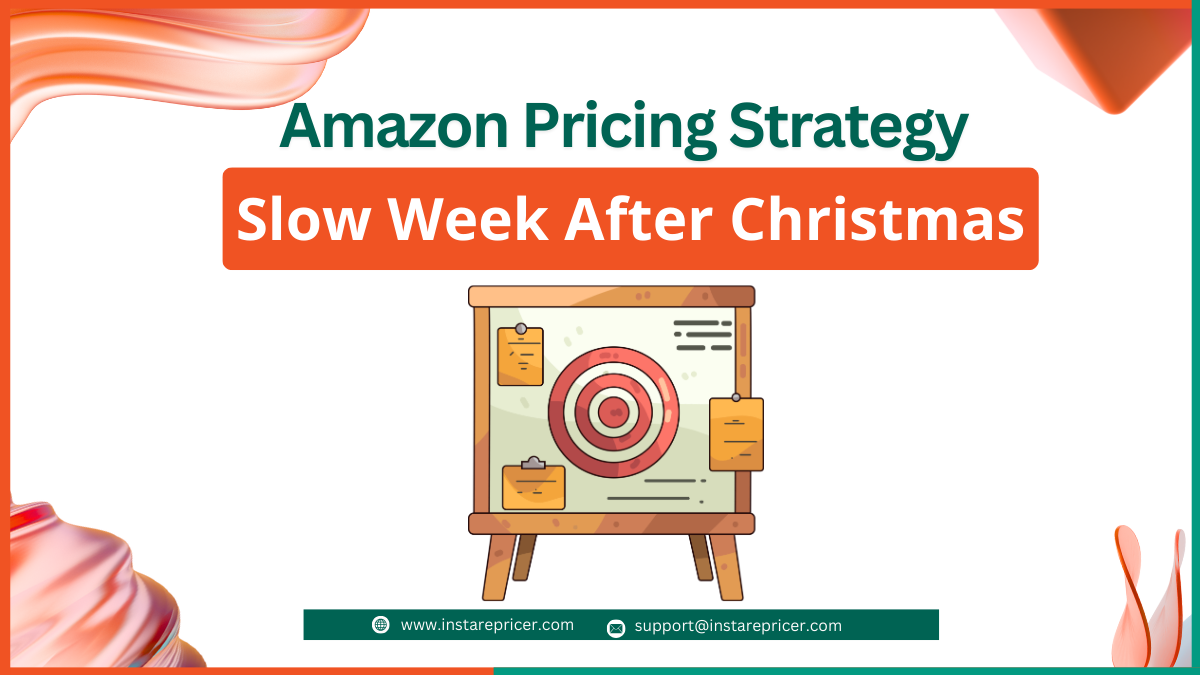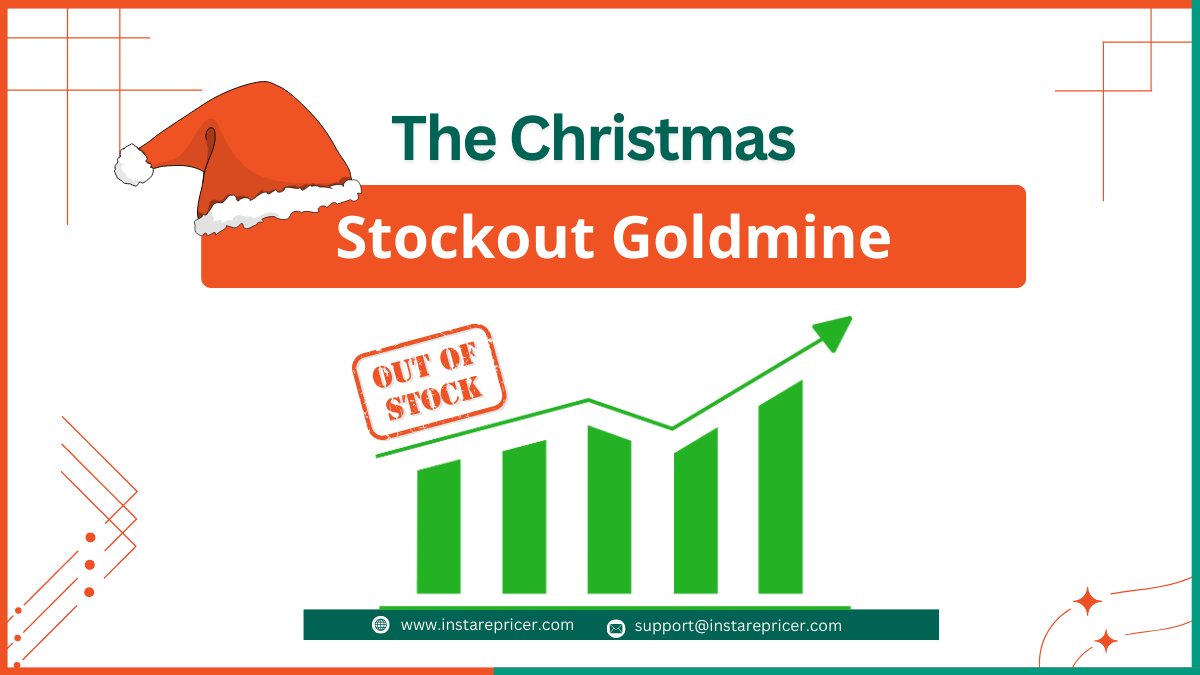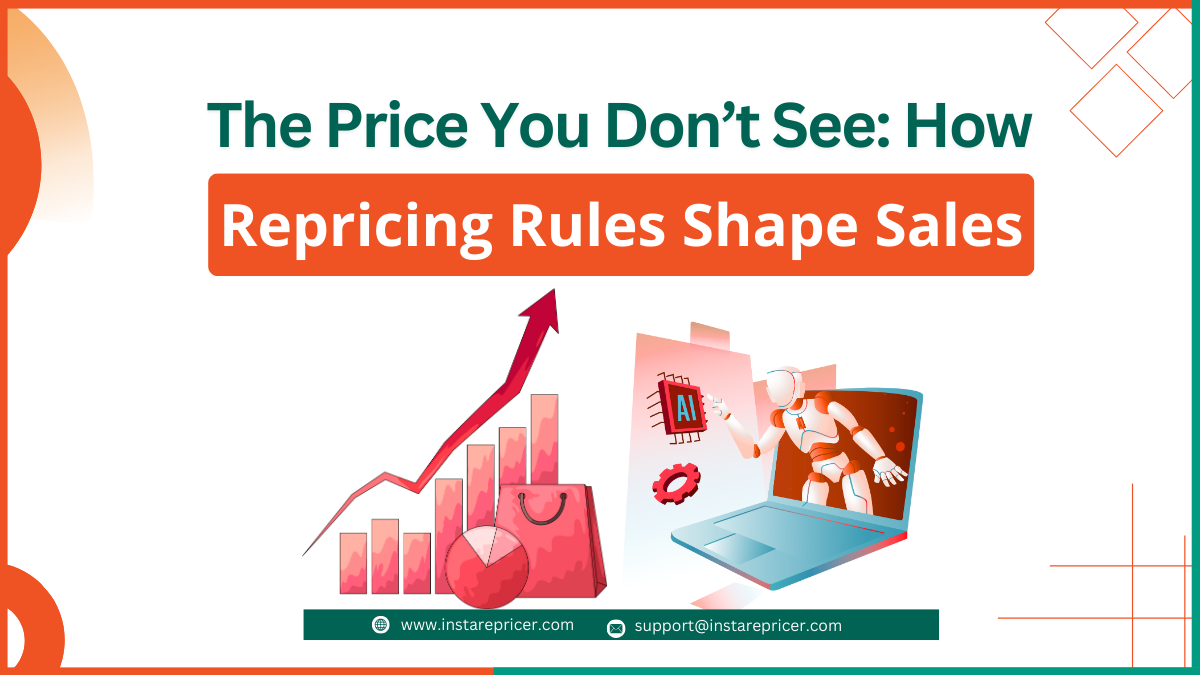Introduction: Amazon Inventory Management Strategy
The lifeblood of every Amazon business is inventory. Yet, too many sellers unknowingly sabotage their profits through outdated practices. Research shows up to 43% of small businesses don’t track inventory properly, resulting in 11% lost revenue annually. Whether you’re overstocked, understocked, or both, you’re paying in fees, lost sales, and customer satisfaction.
If you’re tired of reactive decisions and want to build a bulletproof inventory system, it’s time to act. With 2025 bringing fee hikes, tariff shocks, and stricter restock limits, a modern Amazon inventory management strategy is your best defense and Instarepricer is here to help.
1. Adapt to Tariffs Without Losing Your Margin
Tariffs are no longer hypothetical, they’re slicing margins in real time. From de minimis changes to vendor order cuts, sellers are absorbing costs that directly affect pricing and competitiveness.
Action Steps:
| Strategy | What to Do |
|---|---|
| Diversify | Source from Mexico, Vietnam, or EU regions |
| Recalculate COGS | Adjust landed costs and pricing accordingly |
| Negotiate Terms | Secure lower MOQs or split shipping fees with suppliers |
Tip: Use Instarepricer to ensure your adjusted prices stay competitive without tanking margins.
2. Strengthen Your Supply Chain to Survive Disruptions
“Single-source” supply chains are outdated. Between factory delays, freight jams, and restock limits, sellers must build redundancy into their sourcing models.
Key Moves:
- Backup Suppliers: Maintain alternatives for critical SKUs
- Use Real Lead Times: Account for customs and FBA delays
- Third-Party Warehousing: Hold safety stock in a 3PL to avoid emergency stockouts
3. Slash Amazon FBA Storage Fees with Precision Planning
Amazon’s storage and low-inventory fees are designed to penalize both extremes. Effective inventory management hits the sweet spot just enough, never too much.
Strategies:
- Maintain an IPI score above 450
- Avoid aged inventory penalties (past 181 days)
- Store fast sellers for 4–6 weeks only
Use tools like Instarepricer to balance price competitiveness with holding costs dynamically.
4. Forecast Demand Like a Pro (No More Guessing)
Sales forecasting is part science, part art but mostly data. Don’t fly blind. Start with the basics:
| Forecasting Element | What It Means |
|---|---|
| Sales History | Look at 30, 60, 90-day windows |
| Seasonality | Adjust based on holidays and promos |
| Velocity Tracking | Know your daily average sales |
Graph: Annual Cost Impact of Stockouts vs Overstocking
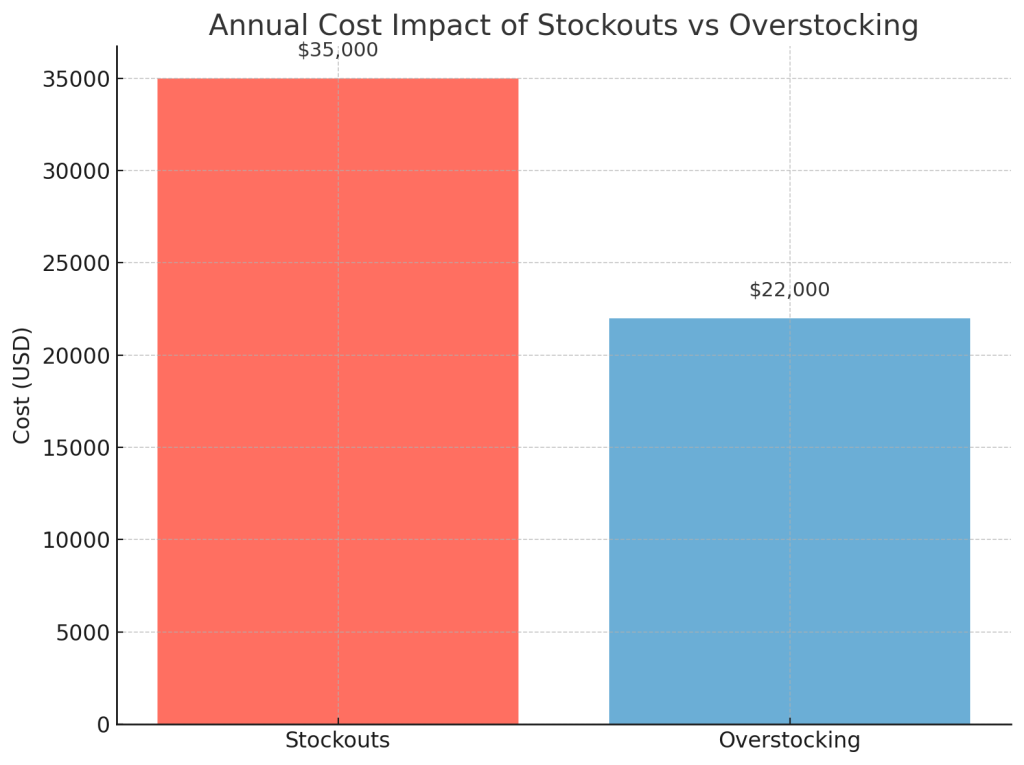
Pro Tip: Use Instarepricer alongside inventory tools to sync pricing strategy with forecasted demand for optimal stock levels.
5. Calculate Reorder Points with Live Data
Here’s the formula that every seller should memorize:
Reorder Point = (Avg Daily Sales × Lead Time) + Safety Stock
If your lead times are unstable, add a buffer. And don’t forget: even the best formula fails without updated data. Revisit your lead time calculations quarterly.
6. Store Smarter, Not More
Safety stock protects against volatility but too much of it erodes your capital. Apply this advanced formula:
Safety Stock = (Max Daily Sales × Max Lead Time) – (Avg Sales × Avg Lead Time)
Segment your inventory:
- Best sellers get more safety stock
- Slow movers get less
- Use 3PLs for high-volume or oversized items
7. Choose the Right Fulfillment Method by SKU
One size doesn’t fit all. Every SKU should have a unique fulfillment plan based on margin, size, and sales volume:
| Fulfillment Type | Best For |
|---|---|
| FBA | Fast-selling, lightweight items |
| FBM | Heavy, slow, or fragile SKUs |
| 3PL | Overflow or hybrid setups |
Consider Seller Fulfilled Prime (SFP) if you want the Prime badge with more control.
8. Turnover Matters: Free Your Cash Flow
Cash flow is king. Slow inventory turnover locks up capital, which delays reordering, ad spend, and expansion. Focus on your inventory turnover ratio to make smarter buying decisions.
“The faster your stock sells, the faster your cash returns.”
Use Instarepricer to keep pricing optimized for maximum sell-through without racing to the bottom.
9. Dispose of Dead Inventory Aggressively
Old stock is a profit killer. Don’t wait for Amazon to slap you with long-term storage fees. Actively monitor inventory age and move slow sellers fast.
- Use Amazon Outlet or Lightning Deals
- Bundle with fast-moving products
- Try FBA Liquidations or removal orders
Inventory Planning Checklist for 2025
| Area | Action Required |
|---|---|
| Data-Driven Decisions | Base buys on real-time data, not guesses |
| Supplier Diversity | At least 2 sources for critical SKUs |
| Fee Awareness | Understand new 2025 Amazon FBA surcharges |
| Forecast Precision | Use sales velocity, trends, and seasonal adjustments |
| Review Schedules | Monthly reviews of aging stock, reorder points, and performance |
| Stockout Prevention | Automate alerts and use Instarepricer to keep top SKUs live |
Why Instarepricer Belongs in Your Strategy
In a market where every penny counts and delays are costly, Instarepricer is more than just a pricing tool it’s an inventory weapon. It helps:
- Keep prices aligned with real-time inventory velocity
- Reduce dead stock risk with dynamic markdowns
- React instantly to competitor changes to hold Buy Box visibility
Final Thoughts: Your Inventory Is Your Business
Inventory management is no longer about avoiding chaos it’s about driving growth. The Amazon landscape in 2025 demands strategic planning, sharp forecasting, and relentless optimization. Whether it’s staying in stock, lowering FBA fees, or avoiding the next tariff punch, your profits depend on it.
Audit your SKUs
Plug in the formulas
Build flexibility into every link of your supply chain
And let Instarepricer help you stay agile, competitive, and profitable.

